Palabras clave:
carotenoides, clorofila, pigmentos, radiación solar, temperatura.Resumen
El crecimiento y desarrollo de los frutos están condicionados por factores ambientales, tales como: radiación solar, temperatura, humedad relativa y precipitación, que afectan su fenología y procesos metabólicos, que se reflejan en su calidad y tamaño. Además la variedad, la edad de la especie vegetal, las prácticas culturales, la cantidad de CO2, los reguladores de crecimiento y la nutrición también influyen en este proceso de maduración. Por otra parte, el proceso fotosintético en frutos inmaduros se da de igual manera que en las hojas, no obstante, cuando comienza el proceso de maduración esto cambia debido a que la clorofila se degrada e intervienen otros pigmentos como los carotenoides, α-carotenos y β-carotenos, que contienen sustancias antioxidantes buenas para la salud del ser humano.
Descargas
Citas
AKED, J. 2000. Fruits and vegetables. In: Kilcast, D. y Subramaniam, P. (eds.). The stability and shelf-life of food. CRC Press. Woudhead Publising Limited, 249-278.
ÁLVAREZ-HERRERA, J., GALVIS, J. & BALAGUERA-LÓPEZ, H. 2009. Determinación de cambios físicos y químicos durante la maduración de frutos de champa (Campomanesia lineatifolia R. & P.). Agronomía Colombiana 27 (2): 253-259.
BAPAT, V. A., TRIVEDI P.K., GHOSH A., SANE V. A., GANAPATHI T. R. & NATH, P. 2010. Ripening of fleshy fruit: Molecular insight and the role of ethylene, Biotechnology Advances 28: 94-107.
BARRANCO, D., FERNÁNDEZESCOBAR, R. & RALLO, L. 2008. El cultivo del olivo. Mundi prensa 6a ed., Madrid, p. 172.
CASIERRA-POSADA, F. & CARDOZO, M. C. 2009. Análisis básico del crecimiento en frutos de tomate (Lycopersicon esculentum mill, cv. “Quindío”) cultivados a campo abierto. Revista Facultad Nacional de Agronomía - Medellín 62 (1): 4815-4822.
COCKSHULL, K. E, GRAVES, C. J. & CUEVA, C. 1992. The influence of shad in g on yield of glasshouse tomatoes. J. J. Hort. Sci. 67: 11-24.
DUSSI, M. C. 2007. Intercepción y distribución lumínica en agroecosistemas frutícolas. En: SOZZI, G. O. (ed.). 2007. Árboles frutales: ecofisiología, cultivo y aprovechamiento. Universidad de Buenos Aires, Buenos Aires, 200-241.
FERRER, A., REMÓN, S., NEGUERUELA, A. & ORIA, R. 2005. Changes during ripening of the very late season spanish pech cultivar calanda feasibility of using CIELAB coordinates as maturity indices. Scientia Horticulturae 105: 435-446.
FOUCHE, J. R., ROBERTS, S. C., MIDGLEY, S. J. E. & STEYN, W. J. 2010. Peel color and blemishes in “Granny Smith” apples in relation to canopy light environment. HortSience 45 (6): 899-905.
GARCÍA-MARTÍNEZ, J. L. & P. HEDDEN. 1997. Gibberellins and fruit development. In: Tomas-Barberan, F.A. & R.J. Robins. (eds.). Phytochemistry of fruit and vegetables. Oxford Sci. Publications, Heidelberg, 263-285.
GRAHAM, H. & SMIT, R. 2010. Preharvest foliar sprays of Prohexadione– calcium, a Gibberellin-biosynthesis Inhibitor, Induce Chlorophyll Degradation and Carotenoid Synthesis in Citrus Rinds HortScience 45: 242-247.
HERRMANN, K. 2001. Inhaltsstoffe von Obst und Gemüse. Ulmer Verlag. Stuttgart, 73-89.
HISAEDA, K. & NISHINA, H. 2007. Studies on improvement of tomato productivity in a large-scale greenhouse- Prediction of tomato yield based on integrated solar radiation . J. Sci. High Technol. Agr. 19: 11-18.
KRAUB, N. 2003. Mechanisms for photosystems I y II. Current Opinion in Chemical Biology 7: 540-550.
KARIOLA, T., G., BRADER, J. LI & PALVA, T. 2005. Chlorophyllase 1, a damage control enzyme, afects the balance between defense pathways in Plants. Plant Cell 17: 282-294.
KAYS, S. 1997. Postharvest physiology of perishable plant products. Exon Press. Athens, GA., 263-278.
KAYS, S. 2004. Postharvest biology. Exon Press (Athens, Georgia), 568pp.
KOJIMA, K. 2005. Phytohormones in shoots and fruits of tomato; Apoplast solution and seedless fruit. JARQ 39(2): 77-81.
KUMUDINI, S. 2004. Effects of radiation and temperature on cranberry photosynthesis and characterization of diurnal variation in photosynthesis . J. Amer. Soc. Hort. Scien. 129: 106-111.
LEMUS, G. 1993. El duraznero en Chile. Editorial Los Andes. Santiago 332 p.
MATILE, P., S. HÖRTENSTEINER & H. HOMAS. 1999. Chlorophyll degradation. Annu. Rev. Plant Physiol. Plant Mol. Biol 50: 67-95.
MATTHEIS, J. & RUDELL, D. 2005. Metabolism of apple Peel constituents during ripening is differently regulated by Ethylene. HortScience 40: 1005-1006.
MEDINA, C., MARTÍNEZ, E., LOBO, M., LÓPEZ, J. & RIAÑO, N. 2006. Comportamiento bioquímico y del intercambio gaseoso del lulo (Solanum quitoense lam.) a plena exposición solar en el bosque húmedo montano bajo del oriente antioqueño colombiano. Revista Facultad Nacional de Agronomía- Medellín 59 (1): 3123-3146.
MELÉNDEZ-MARTÍNEZ, A. J., VICARIO, I. & HEREDIA, F. 2004. Estabilidad de los pigmentos carotenoides en los alimentos. ALAN 54 (2): 209-215.
NABORS, M.W. 2006. Introducción a la botánica. Pearson Educación S.A: Madrid, 205-206.
OLARTE, O., ALMAGUER, G. & ESPINOZA, J. 2001. Efecto de la fertilización foliar en el estado nutrimental, la fotosíntesis, la concentración de carbohidratos y el rendimiento de naranjo “valencia late”. TERRA Latinoamericana 18(4): 339-347.
OSTERLOH, A. 1996. Lagerfaktoren. In: OSTERLOH, A.; G. EBERT; W.H. HELD; H. SCHULZ & E. URBAN (eds.). Lagerung von Obst und Südfrüchten. Editorial Ulmer, Stuttgart, 91-112.
PÉREZ, C., HILDA C., GÓMEZ, P. & VILA, J. 2009. Características físicas de frutos de mamón (Melicoccus bijugatus Jacq.) según su ubicación en el árbol y el almacenamiento. Bioagro 21 (3): 189- 194.
PLANA, D., ÁLVAREZ, M., DUEÑAS, F., LARA, R. M., MOYA, C., FLORIDO, M. & RODRÍGUEZ, J. L. 2008. Efecto de la radiación solar en la intensidad y severidad de la mancha solar en frutos de tomate. Cultivos Tropicales 29 (4): 85-90.
SAMS, C.E. 1999. Preharvest factors affecting postharvest texture. Postharvest Biology and Technology 15: 249-254.
SANTAMARÍA, F., DÍAZ, R., SAURI, E., ESPADAS, F., SANTAMARÍA, J. M., LARQUÉ-SAAVEDRA, A. 2009. Características de calidad de frutos de papaya Maradol en la madurez de consumo. Agricultura Técnica en México 35 (3): 347-353.
STEVEN, J., MACKENZIE, C., CHANDLER, K., HASING, T. & WHITAKER, V. 2011. The Role of Temperature in the Late-season Decline inSoluble Solids Content of Strawberry Fruit in a Subtropical Production System. HortScience 46: 1562-1566.
TADAHISA, H. 2009. Prediction of tomato yield on the basis of solar radiation before anthesis under warm greenhouse conditions. HortScience 44: 1874-1878.
TAIZ L. & E. ZEIGER. 2006. Plant physiology. 4thed. Sinauer Associates, Inc, Publishers.Sunderland. MA. 315- 350.
UBI, B. B. 2004. External stimulation of anthocyanin biosynthesis in apple fruit. Journal of Food, Agriculture and Environment 2(2): 65-70.
VANDEN HEUVEL, J.E. & DAVENPORT, J. R. 2005. Effects of light, temperature, defoliation, and fruiting on carbon assimilation and partitioning in potted cranberry. HortScience 40: 1699–1704.
VALDEN-HEUVEL, J. & WESLEY, R. 2008. Early-season air temperature affects phenolic production in “Early black” Cranberry Fruit. HortScience 43:1737-1741.
VALPUESTA, V., QUESADA M. A. & REID, M. S. 1996. Senescencia y abscisión. En: Azcón-Bieto, J. & M. Talón (eds.). Fisiología y bioquímica vegetal. Interamericana McGraw-Hill, Bogotá, 479-492.
WADA, T., IKEDA, H., MATSUSHITA, K., KAMBARA, A., HIRAI, H., ABE, K. 2006. Effects of shad in g in summer on yield and quality of tomatoes grown on as in gle-truss system. J. Jpn. Soc. Hort. Sci. 75: 51-58.
ZEN-HONG, S.,CHENG-CHUNG, C., LEE-JUAN, H. & CHING-SHUNG, S. 2001. Light, Temperature, and sucrose affect color, diameter, and soluble solids of disks of wax apple fruit skin. HortScience 36: 279-281.





